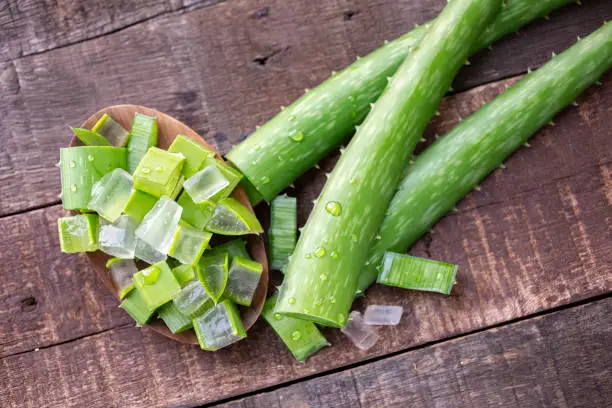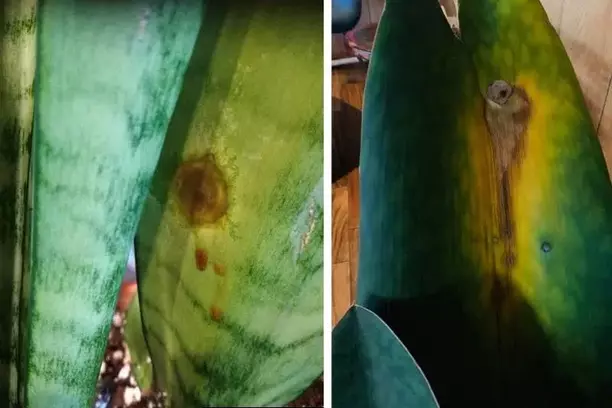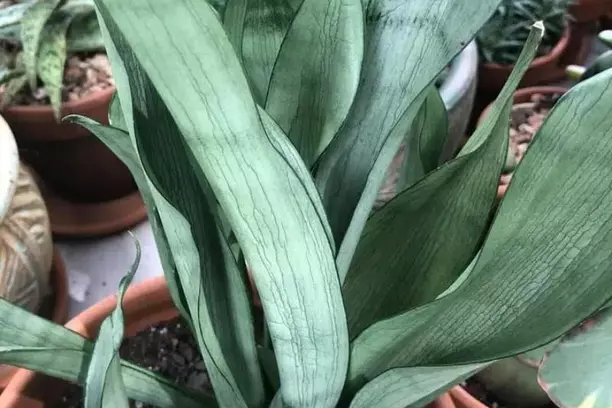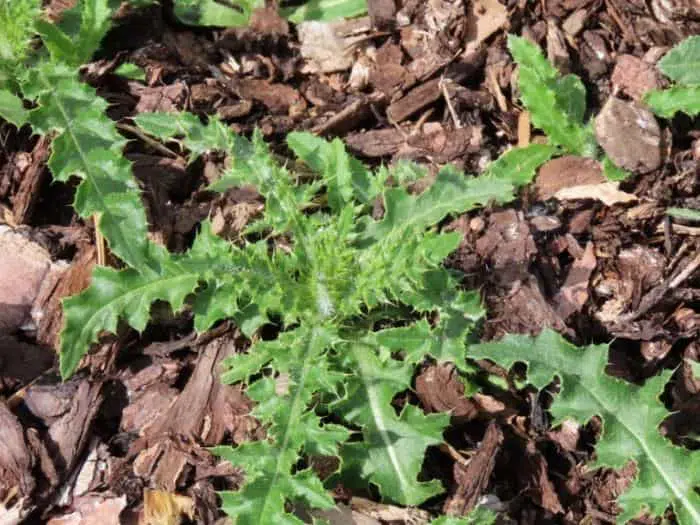Aloe vera plants can withstand very dry conditions but can still develop various complications such as black spots and discoloration on the leaves if they’re not well-taken care of. But what causes the black spots and how do you get rid of them?
The dark spots on aloe vera leaves are a sign of fungal disease, overwatering, or insufficient light. Treat fungal diseases using an anti-fungal application, water the plant only when the soil dries out, and place it where it can receive sunlight for at least 12 hours to get rid of the black spots.
If your aloe plant is healthy, it produces thick lance-like leaves with bright, cheery green color from its center. If you notice the leaves changing their usual appearance, something is probably wrong and needs to be fixed before it affects the plant further.
Why does my aloe plant have dark spots?
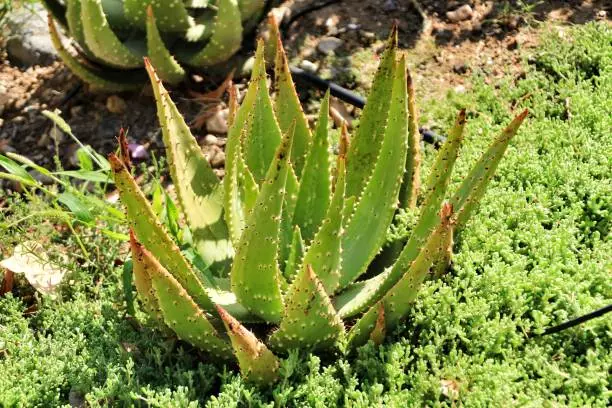
Dark spots in your Aloe Vera plant also known as leaf spots are caused by a fungal infection. They are commonly caused by a fungus (Alternaria alternata) that destroys the plant’s antimicrobial defense, leading to visible black spots on the aloe’s leaves.
The fungus occurs when your aloe vera plants are overwatered and grow in areas with insufficient sunlight. That’s the reason black spots commonly occur on indoor aloe plants planted in glazed and plastic pots.
RELATED: HOW TO REVIVE OVERWATERED ALOE PLANT
How to get rid of black spots on aloe plant
For the most part, aloe plants will have dark spots on their leaves if they’re attacked by a fungal infection. The signs show on the leaves, but inspecting roots can also reveal signs of disease. Therefore, the first thing you want to do is inspect the root zone for any signs of root rot before starting the treatment plan.
Here’s how to get rid of black spots on the aloe plant:
1. Increase humidity for the aloe plant
Aloe vera thrives well in a less humid environment, preferably 40% relative humidity. However, exposing the succulents to extremely dry environments for a prolonged period may cause black spots on the leaves.
Extreme humid environments mean there is no water for photosynthesis. Since the plant won’t survive without photosynthesis, the aloe plant will start utilizing water stored in its leaves. This will result in black spots on the leaves and eventually wilting and drooping of aloe vera leaves. If the black spots on the leaves are a result of extremely low humidity, this is what you need to do to get rid of the black spots:
- Move your potted aloe vera plant to an area with high humidity and let them sit there for at least 5 to 10 hours.
- If you don’t want to move the potted plants for aesthetic reasons, use a plant humidifier to increase the humidity around the plant to about 40%.
- If your Aloe Vera is planted outdoors, gently spray water on affected leaves until the leaves absorb the water it needs for photosynthesis.
2. Provide sufficient light
Though Aloe Vera thrives well when exposed to the sun, direct exposure to excessive sunlight can cause serious damage to the plant. You are likely to notice those dark spots followed by wilting and blanching if you move the plant from shaded environments or indoors to an area exposed to a full day of hot, direct sun. To remedy this problem, you will need to do the following:
- Reduce the plant’s exposure to sunlight from 10 to 2 hours per day to avoid sunburn on the aloe vera leaves.
- If your aloe vera is planted in pots, relocate the pots indoors. If your Aloe Vera is planted outdoors, introduce a light shade over the plants to prevent the excessive sun from reaching the leaves.
- If you decide to move your indoor plants outside during summer to stop the black spots, do it gradually so that the plant can adjust to the new brighter environment.
- If the Aloe Vera pots are placed next to artificial light, move them at least 2 meters away from light.
- If the pots are located indoors but near the window, place a curtain on the window to prevent direct light from scorching the succulent.
RELATED: WHAT ARE THE SIGNS AND HOW TO TREAT SUNBURNT ALOE PLANT
3. Water the aloe plant sparingly
Usually, Aloe Vera plants have thick leaves filled with a gel-like fluid. The plump and juicy leaves might make you think that the plant needs constant watering. That’s not the case. The plant has adequate water storage to withstand high-temperature areas.
Too much watering causes different types of rot including leaf rot, fungal stem rot, soft rot, and root rot. For instance, if some roots are rotten, enough water and nutrients won’t be transported to the cells of those leaves. Keep this in mind when watering your Aloe Vera plant:
- Touch the top layer of the soil to find out if it’s dry.
- Stop watering your plant for at least 15 days if the top layer of the soil is waterlogged.
- Just like other succulent plants, Aloe Vera needs good drainage to ensure there are enough holes underneath the glazed pots and plastic pots to facilitate proper drainage.
- Consider repotting your Aloe Vera plant if the damage is severe.
- When repotting your plants, I recommend you use a new pot and a well-draining soil mixture to avoid transferring the pathogens to the new environment.
4. Improve temperature during winter
Aloe Vera thrives well in an environment with a temperature level between 16-24 degrees Celsius (60-75-degree Fahrenheit). Any temperature below that increases the amount of moisture especially in the soil creating a good environment for pathogen growth. As stated earlier, pathogens are the main cause of black spots on Aloe Vera leaves.
The low-temperature level also causes the stored moisture on the plant’s leaves to freeze. The freezing eventually damages the cells and tissues of the leaves. The damage presents itself as visible black spots on the leaves. To remedy this problem, you need to do the following:
- Insulate your Aloe Vera plants during the cold season. You can use blankets to cover the leaves.
- Relocated your potted Aloe Vera plants to a well-heated area. You can move them at least 2 meters from the artificial heating system.
5. Treat leaf diseases and pests
Some of the diseases that might cause dark spots on your Aloe Vera plant include Aloe Vera anthracnose disease, Cladosporium leaf spot, Aloe Vera leaf spot disease, and Leaf spot and leaf blight disease. In case the black spots on Aloe Vera leaves are a result of a disease, the best way to combat these diseases is to use fungicides and reduce irrigation. If the black spots are caused by pests, you can get rid of the pets from the plant using pesticides.
Will the tiny black spots go away on their own?
Let’s be honest with you. The tiny black spots on Aloe Vera will not go away on their own. You will need to use the methods I’ve outlined above to get rid of small black spots from your plant. It’s also advisable to manually remove the affected leaves to prevent the fungicides from damaging healthy leaves. If your Aloe Vera’s roots are rotten as a result of overwatering or damage by fungi, cut out the affected areas of root before repotting the plant.
